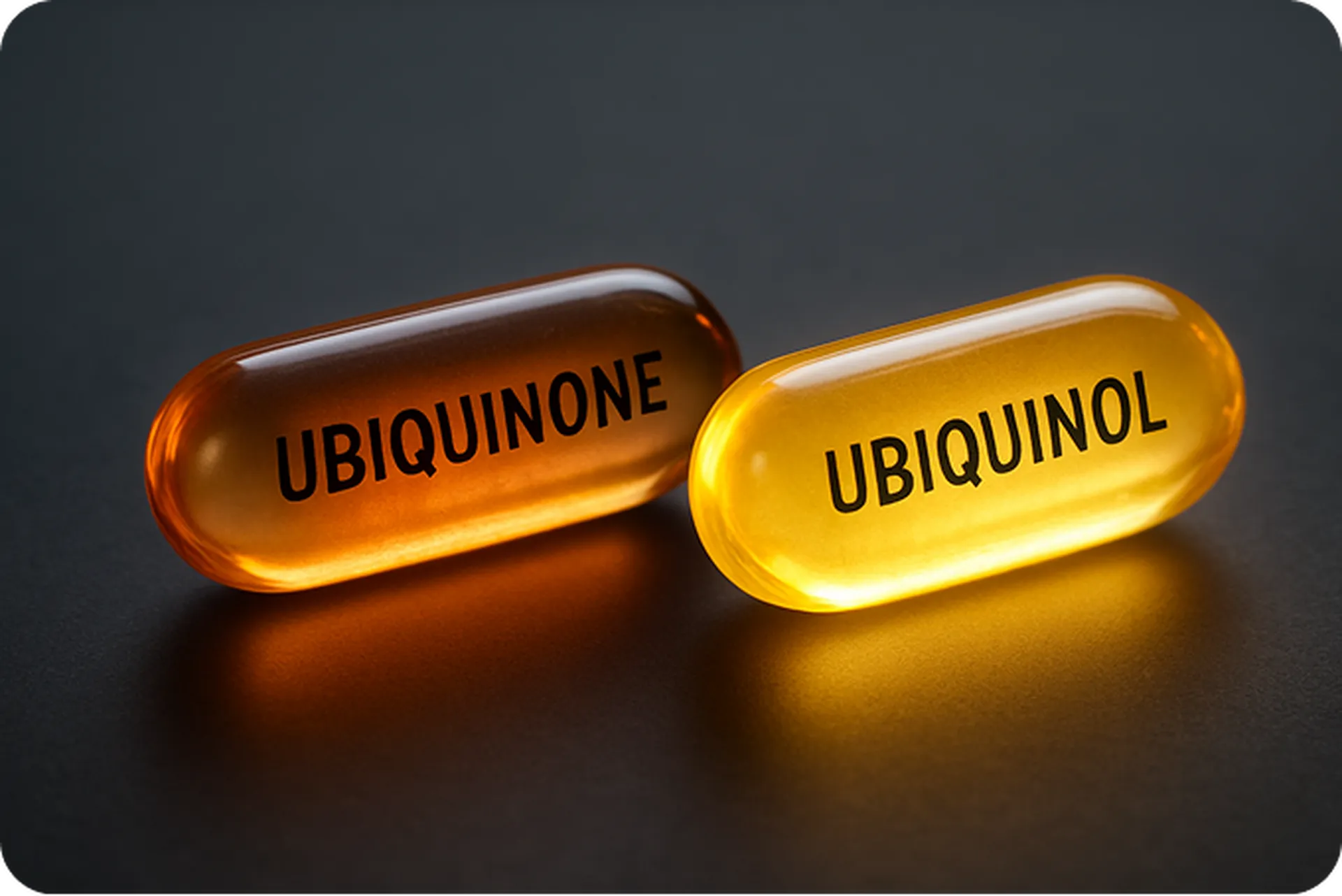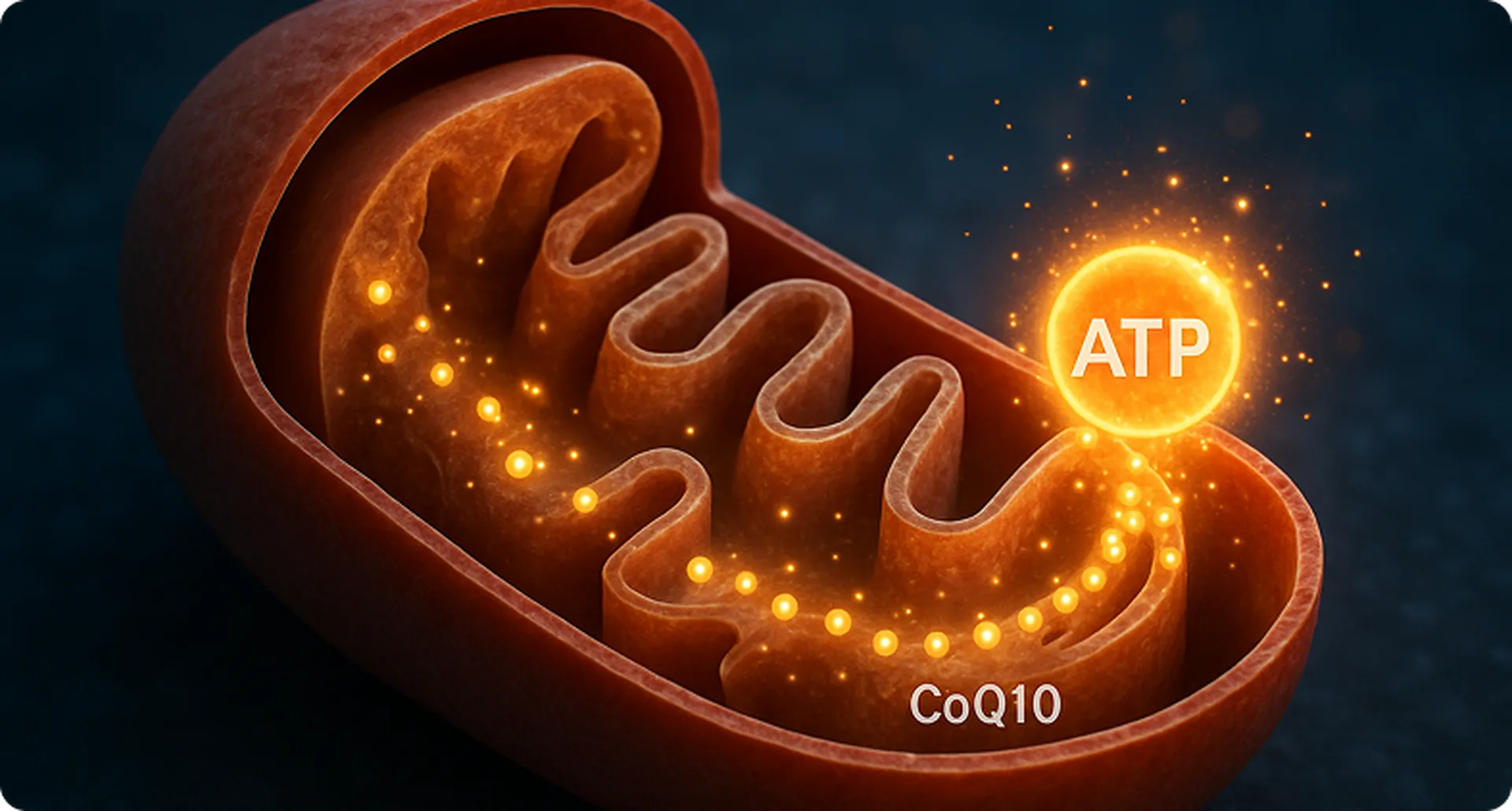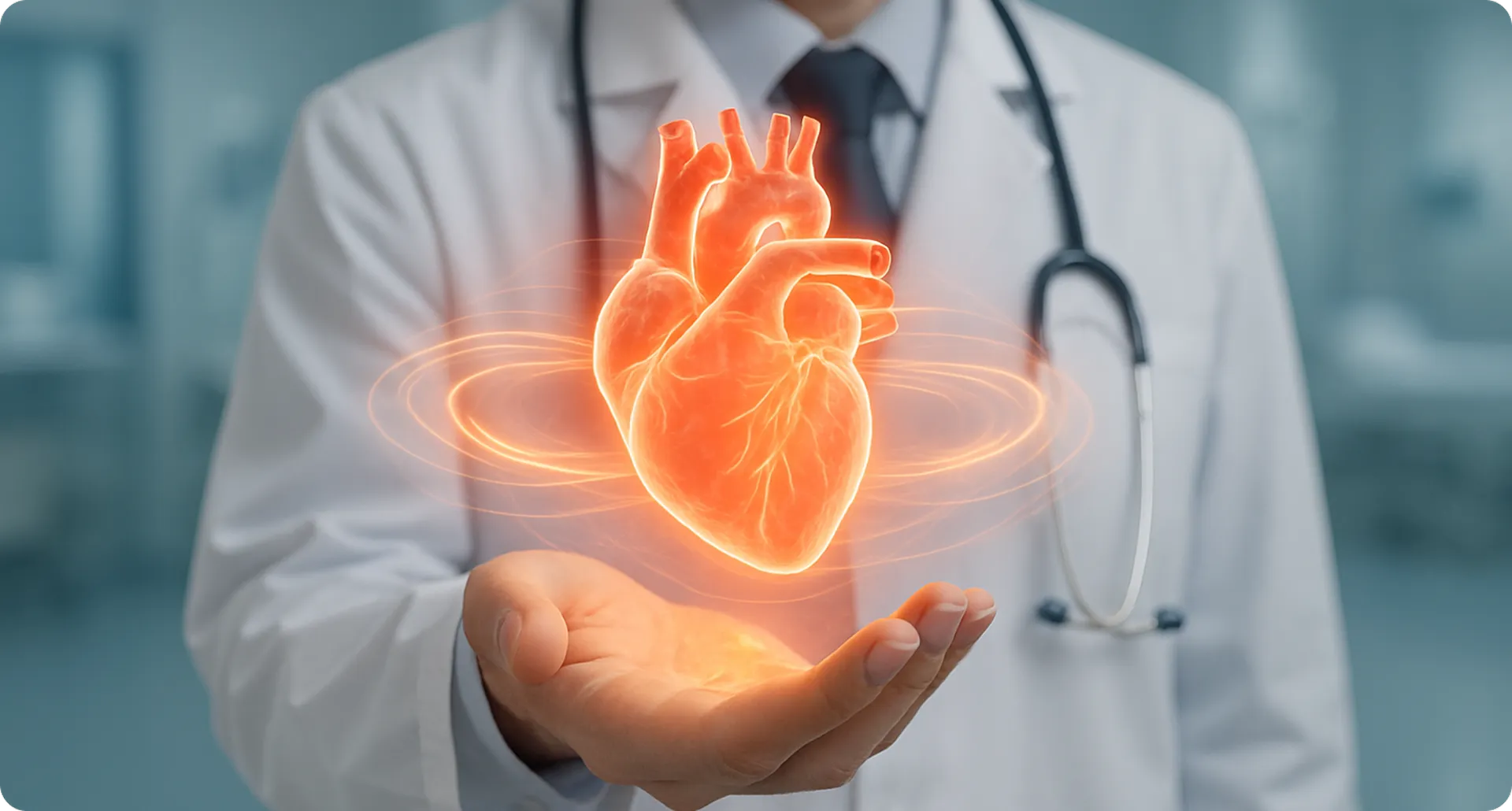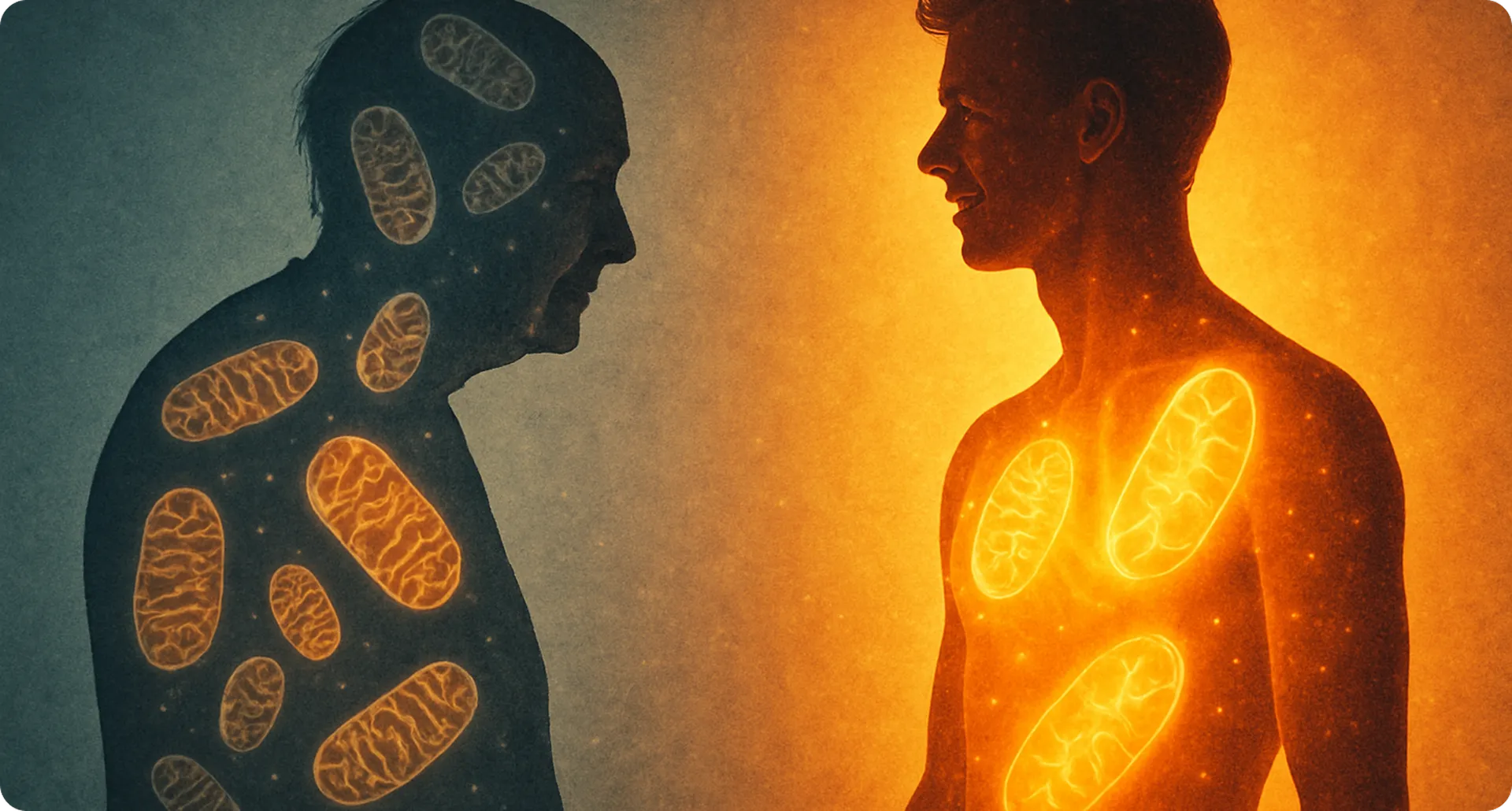CoQ10 and Healthy Aging: Energizing Your Cells for Longevity
High-trust buyer’s-guide-style piece that teaches readers exactly how to evaluate quality and avoid common pitfalls.
By Supplement Reports Team
August 27, 2025
27 min read



Introduction: Why CoQ10 Is Often Called the "Spark Plug" of Cellular Energy

The discovery of CoQ10 dates back to 1957 when Dr. Frederick Crane first isolated this compound from beef heart mitochondria at the University of Wisconsin. However, it wasn’t until 1978 that Dr. Peter Mitchell won the Nobel Prize in Chemistry for his work elucidating the role of CoQ10 in cellular energy production, specifically in the process known as chemiosmotic coupling. This groundbreaking research revealed how CoQ10 functions as a mobile electron carrier in the mitochondrial electron transport chain, making it indispensable for ATP synthesis – the process by which cells generate their primary energy currency.
What makes CoQ10 particularly fascinating from a longevity perspective is its dual nature. Not only does it serve as a critical component in energy production, but it also functions as a powerful antioxidant, protecting cells from the oxidative damage that accumulates over time and contributes to the aging process. This dual functionality positions CoQ10 as both a supporter of cellular vitality and a guardian against cellular deterioration.
The relationship between CoQ10 and aging becomes even more compelling when we consider that our body’s natural production of this vital compound begins to decline as early as our twenties, with levels dropping significantly by middle age. This age-related decline in CoQ10 levels coincides with many of the changes we associate with aging: reduced energy levels, decreased physical performance, and increased susceptibility to oxidative stress. Understanding this connection has led researchers to investigate whether maintaining optimal CoQ10 levels through supplementation might help support healthy aging and cellular vitality throughout life.
As we embark on this comprehensive exploration of CoQ10 and its role in healthy aging, we’ll delve into the science behind this remarkable molecule, examine its various forms and functions, and explore how it might serve as a cornerstone of cellular health and longevity. From its fundamental role in energy production to its protective antioxidant properties, CoQ10 represents one of the most well-researched and promising compounds in the field of nutritional support for healthy aging.
What Is CoQ10? – Understanding Ubiquinone and Ubiquinol

One of the most important aspects of understanding CoQ10 is recognizing that it exists in two primary forms within the body: ubiquinone and ubiquinol. These two forms represent different oxidation states of the same molecule, and they can readily convert back and forth depending on the cellular environment and metabolic needs. This interconversion is fundamental to CoQ10’s function in both energy production and antioxidant protection.
Ubiquinone, the oxidized form of CoQ10, is the form most commonly found in dietary supplements. The name “ubiquinone” derives from “ubiquitous quinone,” reflecting the fact that this compound is found virtually everywhere in the body. In the electron transport chain, ubiquinone accepts electrons from Complex I and Complex II, becoming reduced to ubiquinol in the process. This electron acceptance is crucial for the continuation of the electron transport chain and the ultimate production of ATP.
Ubiquinol, the reduced form of CoQ10, represents the active antioxidant form of the molecule. When ubiquinone accepts electrons and becomes ubiquinol, it gains the ability to donate electrons to neutralize free radicals and other reactive oxygen species. This antioxidant capacity is particularly important in protecting cellular membranes and other lipid-rich structures from oxidative damage.
The balance between ubiquinone and ubiquinol in the body is carefully regulated and can serve as an indicator of cellular health and oxidative stress levels. In healthy, young individuals, a significant portion of total CoQ10 exists in the reduced ubiquinol form. However, as we age or when oxidative stress increases, the ratio shifts toward the oxidized ubiquinone form, potentially indicating compromised cellular antioxidant capacity.
The molecular structure of CoQ10 also includes a long, hydrophobic tail composed of isoprenoid units. This tail allows CoQ10 to embed within cellular membranes, particularly the inner mitochondrial membrane where it plays its crucial role in energy production. The length and structure of this tail are perfectly suited for the molecule’s function, allowing it to move freely within the membrane while maintaining its position in the electron transport chain.
Understanding the different forms of CoQ10 has important implications for supplementation. While the body can convert between ubiquinone and ubiquinol, some research suggests that ubiquinol supplements may be more readily absorbed and utilized, particularly in older adults whose ability to convert ubiquinone to ubiquinol may be diminished. However, both forms have shown benefits in research studies, and the choice between them may depend on individual factors such as age, health status, and specific health goals.
The biosynthesis of CoQ10 in the body is a complex process involving multiple enzymatic steps and requiring several nutrients as cofactors, including B vitamins, vitamin C, and various amino acids. This complex synthesis pathway is one reason why CoQ10 production can decline with age – any disruption in the availability of cofactors or the function of synthetic enzymes can impact overall CoQ10 levels.
Mitochondrial Function – How CoQ10 Supports ATP Production

The process of ATP production occurs through a sophisticated mechanism called oxidative phosphorylation, which takes place in the inner mitochondrial membrane. This process involves a series of protein complexes collectively known as the electron transport chain, where electrons are passed from one complex to another in a carefully orchestrated sequence. CoQ10 serves as a mobile electron carrier between Complex I (NADH dehydrogenase) and Complex II (succinate dehydrogenase) on one side, and Complex III (cytochrome bc1 complex) on the other.
The electron transport chain operates like a sophisticated assembly line, with each complex performing specific functions while contributing to the overall goal of ATP synthesis. When nutrients like glucose and fatty acids are broken down through glycolysis and the citric acid cycle, they generate electron carriers (NADH and FADH2) that feed electrons into the transport chain. These electrons are then passed through the various complexes, with CoQ10 playing a crucial shuttling role.
What makes CoQ10’s role particularly important is its mobility within the inner mitochondrial membrane. Unlike the protein complexes of the electron transport chain, which are fixed in position, CoQ10 can move freely within the lipid bilayer of the membrane. This mobility allows it to collect electrons from multiple sources and deliver them efficiently to Complex III, ensuring that the electron transport chain operates smoothly and efficiently.
The efficiency of this process is remarkable – under optimal conditions, the complete oxidation of one glucose molecule can yield up to 38 molecules of ATP. However, this efficiency depends heavily on the availability of all components of the electron transport chain, including adequate levels of CoQ10. When CoQ10 becomes limiting, the entire energy production system can become bottlenecked, leading to reduced ATP synthesis and compromised cellular function.
The relationship between CoQ10 and mitochondrial function becomes particularly important when we consider the energy demands of different tissues. Organs with high energy requirements, such as the heart, brain, liver, and kidneys, contain the highest concentrations of mitochondria and, consequently, the highest levels of CoQ10. These tissues are also among the first to show signs of dysfunction when CoQ10 levels decline, highlighting the critical importance of maintaining adequate CoQ10 levels for optimal organ function.
Beyond its direct role in electron transport, CoQ10 also influences mitochondrial function through its effects on membrane stability and integrity. The inner mitochondrial membrane must maintain its structure and selective permeability for oxidative phosphorylation to occur efficiently. CoQ10, embedded within this membrane, helps maintain membrane fluidity and stability, ensuring optimal conditions for energy production.
Research has also revealed that CoQ10 plays a role in mitochondrial biogenesis – the process by which cells create new mitochondria. This process becomes increasingly important as we age, as mitochondrial number and function tend to decline over time. By supporting mitochondrial biogenesis, CoQ10 may help maintain cellular energy capacity and overall vitality throughout the aging process.
The concept of mitochondrial efficiency extends beyond simple ATP production to include the management of reactive oxygen species (ROS) that are inevitably produced during electron transport. While some ROS production is normal and even beneficial for cellular signaling, excessive ROS can damage mitochondrial components and impair function. CoQ10’s antioxidant properties help manage this ROS production, protecting mitochondrial integrity while supporting efficient energy production.
Antioxidant Role – Protecting Against Oxidative Stress and Inflammation

The generation of reactive oxygen species (ROS) is an inevitable consequence of normal cellular metabolism, particularly in the mitochondria where oxygen is used in the final steps of energy production. While cells have evolved sophisticated antioxidant defense systems to manage ROS, these systems can become overwhelmed, particularly as we age or when exposed to environmental stressors. This is where CoQ10’s antioxidant function becomes crucial.
What makes CoQ10 particularly effective as an antioxidant is its unique position within cellular membranes. Unlike water-soluble antioxidants like vitamin C, which primarily function in the aqueous environments of cells, CoQ10 is lipophilic (fat-loving) and integrates directly into cellular membranes. This positioning allows it to protect membrane lipids from peroxidation – a particularly damaging form of oxidative stress that can compromise membrane integrity and cellular function.
Lipid peroxidation is a chain reaction process where free radicals attack the polyunsaturated fatty acids in cellular membranes, creating lipid peroxyl radicals that can propagate the damage throughout the membrane. CoQ10 can interrupt this chain reaction by donating electrons to neutralize the lipid peroxyl radicals, effectively stopping the propagation of damage. This protective effect is particularly important for maintaining the integrity of mitochondrial membranes, where efficient energy production depends on proper membrane structure.
The antioxidant function of CoQ10 extends beyond direct free radical scavenging to include the regeneration of other important antioxidants. Research has shown that CoQ10 can help regenerate vitamin E (α-tocopherol) from its oxidized form, effectively recycling this important membrane antioxidant and extending its protective capacity. This synergistic relationship between CoQ10 and vitamin E demonstrates the interconnected nature of cellular antioxidant systems.
CoQ10’s antioxidant properties also play a role in protecting DNA from oxidative damage. While CoQ10 doesn’t directly interact with DNA like some other antioxidants, its protection of cellular membranes and mitochondrial function helps maintain the overall cellular environment necessary for proper DNA maintenance and repair. Additionally, by supporting efficient mitochondrial function, CoQ10 may help reduce the production of ROS that could otherwise damage nuclear and mitochondrial DNA.
The relationship between CoQ10 and inflammation represents another important aspect of its protective function. Chronic low-grade inflammation is increasingly recognized as a key driver of aging and age-related health issues. CoQ10 appears to have anti-inflammatory properties, potentially through its antioxidant effects and its influence on cellular energy metabolism. By reducing oxidative stress, CoQ10 may help prevent the activation of inflammatory pathways that can contribute to cellular damage and aging.
Research has also revealed that CoQ10 can influence the expression of genes involved in antioxidant defense and inflammation. This suggests that CoQ10’s protective effects may extend beyond its direct antioxidant activity to include modulation of cellular signaling pathways that regulate oxidative stress response and inflammatory processes.
The balance between CoQ10’s roles in energy production and antioxidant protection is dynamic and responsive to cellular needs. During periods of high energy demand, more CoQ10 may be utilized in the electron transport chain for ATP production. Conversely, during periods of oxidative stress, more CoQ10 may function in its antioxidant capacity. This flexibility allows CoQ10 to serve as both an energy supporter and a cellular protector, adapting to changing cellular conditions.
Cardiovascular and Muscle Support – Energizing High-Demand Tissues

Cardiac muscle cells, or cardiomyocytes, contain an exceptionally high density of mitochondria – approximately 30-40% of the cell volume is occupied by these cellular powerhouses. This high mitochondrial density reflects the enormous energy requirements of the heart, which must maintain continuous contractile activity throughout life. The abundance of mitochondria in cardiac tissue also means that these cells contain some of the highest concentrations of CoQ10 in the body.
The relationship between CoQ10 and cardiovascular health has been the subject of extensive research over several decades. Studies have consistently shown that individuals with various cardiovascular conditions often have lower levels of CoQ10 in their heart tissue and blood compared to healthy individuals. This observation has led researchers to investigate whether CoQ10 supplementation might help support cardiovascular function and overall heart health.
One of the key ways CoQ10 may support cardiovascular health is through its role in maintaining optimal energy production in cardiac muscle cells. The heart’s ability to contract effectively depends on adequate ATP availability, and any compromise in mitochondrial function can impact cardiac performance. By supporting efficient electron transport and ATP synthesis, CoQ10 helps ensure that cardiac muscle cells have the energy they need to maintain proper contractile function.
The antioxidant properties of CoQ10 are particularly relevant for cardiovascular health, as the cardiovascular system is constantly exposed to oxidative stress from various sources. The process of oxygen transport and delivery throughout the body naturally generates reactive oxygen species, and the cardiovascular system must cope with this ongoing oxidative challenge. CoQ10’s ability to protect cellular membranes from lipid peroxidation is especially important for maintaining the integrity of blood vessel walls and cardiac muscle cell membranes.
Research has also explored CoQ10’s potential role in supporting healthy blood pressure levels. Some studies suggest that CoQ10 supplementation may help support the body’s natural mechanisms for maintaining optimal blood pressure, possibly through its effects on endothelial function and nitric oxide production. The endothelium, the inner lining of blood vessels, plays a crucial role in regulating vascular tone and blood flow, and its proper function depends on adequate energy supply and protection from oxidative stress.
Beyond the heart itself, CoQ10 also plays important roles in supporting the health of blood vessels throughout the cardiovascular system. The smooth muscle cells that line blood vessels have significant energy requirements for maintaining vascular tone and responding to various physiological signals. CoQ10’s support of mitochondrial function in these cells may contribute to overall vascular health and function.
Skeletal muscle, like cardiac muscle, has high energy demands and contains abundant mitochondria, making it another tissue that may particularly benefit from adequate CoQ10 levels. During physical activity, skeletal muscle energy demands can increase dramatically – up to 100-fold during intense exercise. This massive increase in energy requirement places enormous demands on mitochondrial function and CoQ10-dependent energy production pathways.
Research has investigated CoQ10’s potential role in supporting exercise performance and recovery. Some studies have suggested that CoQ10 supplementation may help improve exercise capacity, reduce exercise-induced oxidative stress, and support faster recovery from physical activity. These effects are thought to be related to CoQ10’s dual roles in energy production and antioxidant protection.
The aging process brings particular challenges for both cardiovascular and skeletal muscle function. Age-related declines in mitochondrial function, combined with naturally decreasing CoQ10 levels, can contribute to reduced exercise capacity, increased fatigue, and compromised cardiovascular function. Supporting CoQ10 levels through supplementation may help address some of these age-related changes and support continued physical vitality throughout the aging process.
Muscle recovery and adaptation following exercise also depend on efficient cellular repair and regeneration processes, which require adequate energy supply and protection from oxidative damage. CoQ10’s support of both energy production and antioxidant protection may contribute to more efficient muscle recovery and adaptation, potentially supporting long-term physical function and performance.
Declining Levels with Age – Understanding the Need for Supplementation

The decline in CoQ10 levels begins surprisingly early in life. Research has shown that CoQ10 levels peak in early adulthood, typically in the twenties, and then begin a gradual but steady decline. By age 40, CoQ10 levels may be 25% lower than peak levels, and by age 65, they may be reduced by 50% or more. This decline occurs in all tissues but is particularly pronounced in metabolically active organs like the heart, liver, and kidneys.
Several factors contribute to this age-related decline in CoQ10 levels. The biosynthesis of CoQ10 is a complex process involving multiple enzymatic steps and requiring various cofactors, including B vitamins, vitamin C, and several amino acids. As we age, the efficiency of these synthetic pathways may decline due to reduced enzyme activity, decreased availability of cofactors, or increased oxidative stress that can damage the synthetic machinery.
The mevalonate pathway, which produces the isoprenoid precursors needed for CoQ10 synthesis, is the same pathway involved in cholesterol synthesis. This pathway is regulated by the enzyme HMG-CoA reductase, which is also the target of statin medications used to lower cholesterol. The age-related decline in this pathway’s activity may contribute to reduced CoQ10 production, and this effect can be exacerbated by statin use, which can further reduce CoQ10 levels.
Increased oxidative stress with aging also contributes to declining CoQ10 levels. As CoQ10 functions as an antioxidant, it becomes oxidized in the process of neutralizing free radicals. While the body can regenerate CoQ10 from its oxidized form, this regeneration process may become less efficient with age, leading to a net decrease in the active, reduced form of CoQ10 (ubiquinol).
The consequences of declining CoQ10 levels are multifaceted and can affect virtually every aspect of cellular function. Reduced CoQ10 availability can lead to decreased efficiency of the electron transport chain, resulting in reduced ATP production and compromised cellular energy metabolism. This energy deficit can manifest as increased fatigue, reduced physical performance, and decreased ability to cope with physiological stressors.
The decline in CoQ10’s antioxidant capacity with age may also contribute to increased oxidative damage and accelerated aging processes. As CoQ10 levels decrease, cells become more vulnerable to lipid peroxidation and other forms of oxidative damage, potentially leading to compromised membrane integrity, mitochondrial dysfunction, and accelerated cellular aging.
Different tissues may be affected differently by declining CoQ10 levels, depending on their metabolic demands and antioxidant requirements. High-energy tissues like the heart, brain, and skeletal muscle may be particularly vulnerable to CoQ10 deficiency, as they rely heavily on efficient mitochondrial function for optimal performance.
The recognition of age-related CoQ10 decline has led to increased interest in CoQ10 supplementation as a potential intervention for supporting healthy aging. The rationale is straightforward: if declining CoQ10 levels contribute to age-related cellular dysfunction, then maintaining adequate CoQ10 levels through supplementation might help preserve cellular function and support healthy aging.
Research on CoQ10 supplementation in aging populations has shown promising results. Studies have demonstrated that CoQ10 supplementation can effectively increase blood and tissue levels of CoQ10, even in older adults. More importantly, these increases in CoQ10 levels have been associated with improvements in various markers of cellular function, energy metabolism, and antioxidant status.
The bioavailability of CoQ10 supplements can be influenced by several factors, including the form of CoQ10 used (ubiquinone vs. ubiquinol), the formulation of the supplement, and individual factors such as age and digestive function. Older adults may have reduced ability to absorb and convert ubiquinone to the active ubiquinol form, which is one reason why ubiquinol supplements are sometimes recommended for this population.
The timing and dosing of CoQ10 supplementation may also be important considerations. Some research suggests that taking CoQ10 with meals, particularly those containing fats, may improve absorption. The optimal dose may vary depending on individual factors, health status, and specific goals, but typical supplementation doses range from 100 to 300 mg per day.
Research and Clinical Applications – Evidence for CoQ10's Benefits

Early research on CoQ10 focused primarily on understanding its basic biochemical functions, particularly its role in mitochondrial energy production. These foundational studies, conducted in the 1960s and 1970s, established CoQ10 as an essential component of the electron transport chain and helped elucidate the mechanisms by which it supports ATP synthesis. This basic research provided the scientific foundation for later investigations into CoQ10’s potential therapeutic applications.
One of the most extensively studied applications of CoQ10 has been in cardiovascular health. Numerous clinical trials have investigated the effects of CoQ10 supplementation on various aspects of cardiovascular function, with many showing positive results. These studies have examined CoQ10’s effects on exercise capacity, quality of life measures, and various biomarkers of cardiovascular health.
A landmark study in cardiovascular research was the Q-SYMBIO trial, a multicenter, randomized, double-blind, placebo-controlled study that investigated the effects of CoQ10 supplementation in individuals with chronic heart conditions. This study, which followed participants for two years, found significant improvements in symptoms and quality of life measures in the CoQ10 group compared to placebo. The results of this study helped establish CoQ10 as a valuable adjunctive therapy for supporting cardiovascular health.
Research has also explored CoQ10’s potential benefits for physical performance and exercise capacity. Several studies have investigated whether CoQ10 supplementation can improve exercise performance, reduce exercise-induced fatigue, or enhance recovery from physical activity. While results have been mixed, some studies have shown improvements in exercise capacity and reduced markers of oxidative stress following exercise in individuals taking CoQ10 supplements.
The relationship between CoQ10 and statin medications has been another important area of research. Statins, which are widely prescribed for cholesterol management, can reduce CoQ10 levels by inhibiting the mevalonate pathway involved in CoQ10 synthesis. Several studies have investigated whether CoQ10 supplementation can help address some of the side effects associated with statin use, particularly muscle-related symptoms. While results have been mixed, some studies have suggested that CoQ10 supplementation may help reduce muscle symptoms in some individuals taking statins.
Neurological applications of CoQ10 have also been the subject of significant research interest. The brain’s high energy demands and vulnerability to oxidative stress make it a logical target for CoQ10 supplementation. Studies have investigated CoQ10’s potential benefits for various neurological conditions, with some showing promising results in terms of slowing progression or improving symptoms.
Research on CoQ10 and aging has explored its potential role in supporting healthy aging processes. Some studies have investigated whether CoQ10 supplementation can improve markers of cellular aging, such as mitochondrial function, oxidative stress levels, and inflammatory markers. While this research is still in relatively early stages, initial results have been encouraging and suggest that CoQ10 may indeed have anti-aging properties.
The field of CoQ10 research has also benefited from advances in analytical techniques that allow for more precise measurement of CoQ10 levels in blood and tissues. These improved measurement techniques have helped researchers better understand the relationship between CoQ10 levels and various health outcomes, and have contributed to more refined dosing recommendations for supplementation.
One area of ongoing research interest is the development of more bioavailable forms of CoQ10. Traditional CoQ10 supplements have relatively poor absorption, leading researchers to explore various formulation strategies to improve bioavailability. These include the use of ubiquinol instead of ubiquinone, the development of nano-emulsion formulations, and the combination of CoQ10 with other compounds that may enhance absorption.
The safety profile of CoQ10 has been extensively studied, with research consistently showing that CoQ10 supplementation is well-tolerated with minimal side effects. This excellent safety profile, combined with its potential benefits, has made CoQ10 one of the most widely used dietary supplements worldwide.
Current research continues to explore new applications for CoQ10 and to better understand optimal dosing strategies for different populations and health conditions. Areas of active investigation include CoQ10’s potential role in supporting immune function, its effects on skin health and aging, and its potential applications in sports nutrition and performance enhancement.
Conclusion – CoQ10 as a Vital Nutrient for Energy and Long-Term Wellness

The scientific evidence supporting CoQ10’s importance for human health is both extensive and compelling. Decades of research have consistently demonstrated its crucial role in mitochondrial function, energy production, and cellular protection. The well-documented decline in CoQ10 levels with age, combined with the increasing energy demands and oxidative stress that accompany aging, creates a compelling rationale for considering CoQ10 supplementation as part of a comprehensive approach to healthy aging.
What makes CoQ10 particularly valuable as a longevity-supporting nutrient is its ability to address multiple aspects of cellular aging simultaneously. Its role in energy production helps maintain the cellular vitality necessary for optimal organ function, while its antioxidant properties protect against the oxidative damage that accumulates over time and contributes to aging processes. This dual functionality makes CoQ10 a cornerstone nutrient for cellular health and longevity.
The cardiovascular system, with its extraordinary energy demands and constant exposure to oxidative stress, represents perhaps the most compelling example of CoQ10’s importance for health and longevity. The heart’s reliance on efficient mitochondrial function for its continuous contractile activity makes it particularly vulnerable to CoQ10 deficiency, and the extensive research on CoQ10’s cardiovascular benefits provides strong evidence for its therapeutic potential.
Similarly, the importance of CoQ10 for muscle function and physical performance highlights its relevance for maintaining independence and quality of life as we age. The ability to remain physically active and maintain muscle function is crucial for healthy aging, and CoQ10’s support of muscle energy metabolism and recovery may contribute significantly to these goals.
The safety profile of CoQ10, established through decades of research and widespread use, adds to its appeal as a longevity-supporting supplement. Unlike many compounds with potential anti-aging properties, CoQ10 has a well-established safety record and is generally well-tolerated even at relatively high doses. This safety profile, combined with its fundamental importance for cellular function, makes CoQ10 an attractive option for long-term supplementation.
The ongoing research into CoQ10’s mechanisms of action and potential applications continues to reveal new insights into its importance for human health. From its effects on gene expression and cellular signaling to its potential role in supporting immune function and cognitive health, CoQ10’s influence on human biology appears to be even more extensive than originally recognized.
For individuals considering CoQ10 supplementation, the current evidence suggests that it can be a valuable addition to a comprehensive approach to healthy aging. The choice between ubiquinone and ubiquinol forms, the optimal dosing strategy, and the timing of supplementation are all factors that may influence effectiveness, and these considerations may vary depending on individual circumstances and health goals.
The integration of CoQ10 supplementation with other healthy lifestyle practices – including regular exercise, a balanced diet rich in antioxidants, adequate sleep, and stress management – may provide synergistic benefits that exceed what any single intervention could achieve alone. This holistic approach to healthy aging recognizes that longevity and vitality result from the complex interplay of multiple factors, with CoQ10 serving as one important component of the overall strategy.
Looking toward the future, continued research on CoQ10 will likely reveal even more applications and refine our understanding of optimal supplementation strategies. The development of more bioavailable formulations, the exploration of combination therapies, and the investigation of personalized dosing approaches based on individual genetic and metabolic profiles all represent exciting areas for future development.
The story of CoQ10 also illustrates the importance of understanding cellular biology in the quest for healthy aging. By recognizing the fundamental processes that underlie cellular health and vitality, we can identify key intervention points that may help support these processes throughout life. CoQ10’s roles in energy production and antioxidant protection represent two of the most important aspects of cellular health, making it a logical target for longevity-focused interventions.
As we continue to unravel the complexities of aging and longevity, CoQ10 will undoubtedly remain an important focus of research and clinical application. Its fundamental importance for cellular function, combined with its excellent safety profile and well-documented benefits, positions it as a cornerstone nutrient for anyone interested in supporting their cellular health and promoting longevity.
In conclusion, CoQ10 represents far more than just another dietary supplement – it is a vital nutrient that supports some of the most fundamental processes of life itself. Whether obtained through dietary sources or supplementation, maintaining adequate CoQ10 levels throughout life may be one of the most important steps we can take to support our cellular engines and promote healthy, vibrant aging. As we continue to learn more about this remarkable molecule, its role in supporting human health and longevity will likely become even more apparent, cementing its position as an essential component of any comprehensive approach to healthy aging and cellular vitality.
Top Rated Longevity Supplement
100% Natural Resveratrol - 1000mg Per Serving
Max Strength (180 Capsules)
9.9

- Supports overall wellness by protecting cells from oxidative stress
- Promotes healthy aging and cardiovascular health
- Helps maintain optimal vitality with powerful antioxidants
- 1000mg per serving max strength formula
- 180 capsules for long-lasting supply
Show more
- Supports overall wellness by protecting cells from oxidative stress
- Promotes healthy aging and cardiovascular health
- Helps maintain optimal vitality with powerful antioxidants
- 1000mg per serving max strength formula
- 180 capsules for long-lasting supply
Picked by ... people today
